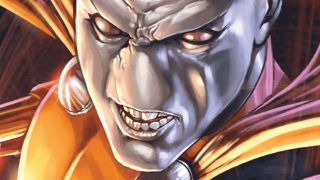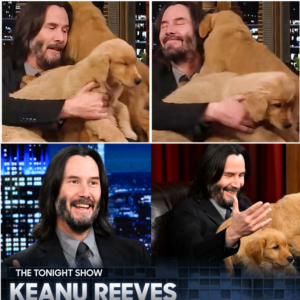Let’s learn more about the shapeshifting mutant.

Before the X-Men movies came along and turned the mutant superheroes into cinematic heavyweights, X-Men: The Animated Series was the most well-known depiction of these characters outside of the comics, and still ranks as one of the best animated TV shows of all time. Featuring the likes of Wolverine, Jean Grey, Beast, Jubilee and more as its main protagonists, the series ran from 1992 to 1997, and in March 2024, X-Men ’97 revived this continuity for people with a Disney+ subscription. In addition to the original starring lineup returning, various other mutants have chances to shine in big ways, including the shapeshifter Morph.
Although Morph, originally voiced by Ron Rubin, was featured in numerous episodes of X-Men: The Animated Series, X-Men ’97 added them back as a primary member of the team. Additionally, the character, now voiced by J.P. Karliak, was also made nonbinary and goes by they/them pronouns (but also still responds to he/him), adding another layer of LGBTQ+ representation to this property. While Morph certainly isn’t as well-known as folks like Wolverine and Storm, X-Men ’97 went a long ways towards boosting their popularity, making now a great time to go over all the important things to know about them.

Morph’s Comics History
In 1967’s The X-Men #35, a character named Changeling was introduced by writer Roy Thomas and artists Werner Roth. Changeling was initially depicted as a villain who served as second-in-command to Mutant Master, leader of Factor Three. After the group’s defeat, Changeling, who was suffering from a terminal illness, wanted to spend his last months seeking redemption. So he joined the X-Men and was mortally injured by Grotesk while disguised as Professor X. The character was later revived as a zombie by Black Talon to be used against She-Hulk, but broke free of that control long enough to be defeated and laid back to rest.
X-Men: The Animated Series loosely based Morph off Changeling (he was not called that on the show due to disputes with DC Comics over Beast Boy, who’d also used that identity), and following the show’s success, a comics version of Morph based on this TV version was introduced in 2001. This take on the character hailed from Earth-1081 and had been part of teams like the X-Men, New Mutants and Avengers. However, after ending up unhinged from time, he became a member of The Exiles, a group of superheroes who come from different realities and are called upon to fix problems in these other worlds or alternate timelines.

How X-Men: The Animated Series Used Morph
Morph started out in X-Men: The Animated Series as one of the team’s members, primarily standing out using their shapeshifting abilities to provide comic relief and having a close friendship with Wolverine. Towards the end of the show’s second episode, “Night of the Sentinels – Part 2,” Morph sacrificed themself to save their clawed teammates from being blasted by a Sentinel. X-Men ’97 supervising director Jake Castorena called this death more “impactful” for him than Game of Thrones’ Ned Stark.
Fortunately, that didn’t mark the end of Morph’s story. In the Season 2 premiere, it was revealed that Mister Sinister retrieved their body and resurrected then, but implanted them with a mind control device to turn them into his minion. This resulted in Morph developing two personalities: one who blamed the X-Men for leaving them behind, and the other who still considered them his friends. With Professor X’s help, Morph was able to break free of Sinister’s control and have the implant removed from their head.
They were then taken to Muir Island to undergo treatment for their trauma under the supervision of Dr. Moira McTaggert. Morph made sporadic appearances during the rest of X-Men: The Animated Series, including playing a pivotal role in the Season 4 episode “Courage,” and by the end of the series finale, they permanently rejoined the team and impersonated Professor X in order to make it seem to the world that he’d died, while the real Charles Xavier was taken by Lilandra to the Shi’ar Empire to be healed after he was hit by an energy disruptor fired by Henry Peter Gyrich.

(Image credit: Marvel Studios Animation)
How X-Men ’97 Used Morph
Nearly three decades passed between X-Men: The Animated Series concluding and X-Men ’97 premiering, but within this universe, the latter picked up shortly after the former. However, with Morph came some especially big changes. In addition to now being nonbinary (though that term is never stated in the show), the character in their natural form now has light gray skin, white eyes, a bald head and no nose, similar to how the Spider-Man villain The Chameleon looks with his white mask on. However, Morph continues to use their earlier human look as a disguise out in public.
X-Men ’97 also took Morph’s relationship with Wolverine a step further. After numerous hints throughout Season 1 that the former saw the latter in more than just a platonic way, “Tolerance is Extinction – Part 3” saw a Jean Grey-disguised Morph telling Wolverine that they loved him while he was recovering from the adamantium being ripped from his skeleton. Former showrunner Beau DeMayo confirmed on X (formerly known as Twitter) after the Season 1 finale that Morph has romantic feelings for Wolverine, and said in another X post that they used the Jean Grey form as a “shield” because they’re afraid of expressing how they really felt in front of him. However, J.P. Karliak told Polygon that he doesn’t want Morph and Wolverine to become romantically involved, as he prefers them being friends.
Outside of this changed dynamic with Wolverine, Morph didn’t really have his own personal arc during X-Men ’97 Season 1. However, their shapeshifting power did get a big upgrade, because rather than just simply mimicking a person’s appearance and voice, Morph can also replicate powers too, ranging from Wolverine’s claws to Hulk’s brute strength. However, these powers aren’t quite as strong as the ones their original counterparts boast.
By the time X-Men ’97 Season 1 was over, Morph, Wolverine and Storm’s whereabouts were left a mystery, so it’s hard to say where we’ll find the shapeshifting mutant when Season 2 kicks off. Whatever lies in store for them, let’s hope that Morph gets even more time to shine in the next round of episodes, as they were among the many ways this first season was so enjoyable to watch.
